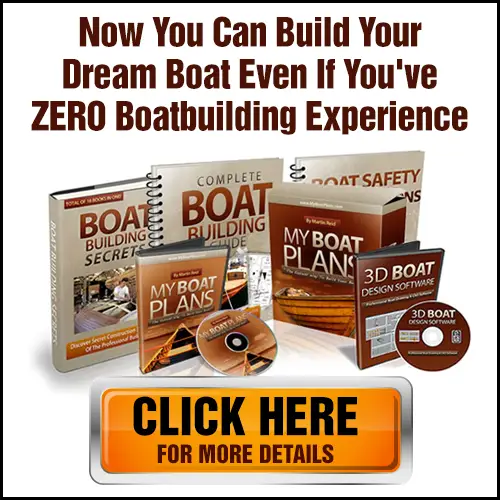There have been various modifications in boats’ design and development stages over the years. Some characteristics of boat and ship design, on the other hand, have stayed stable. These considerations, which encompass structural, technological, and holistic factors, significantly impact boat design. It’s worth noting that, while the transitory components have changed due to social, political, and military laws, the essential values of boat design have mostly remained unchanged. Boats have undergone significant basic alterations for greater performance in recent years, with the arrival of technology and increased knowledge about the detrimental consequences of boat emissions.
Here, we’ll go over the most important parts of boat design and construction, as well as the factors that influence boat sales. We will not focus on structural concerns but on the aesthetic and technical aspects that have become increasingly important in today’s design requirements.
Aesthetic, materials used in boat construction, numerous technology, what kind of wood needed to be used, features of the boat, and boat buyer’s perspective are the five main factors of boat design. To create a modern, environmentally friendly, and cost-effective boat, everyone must maximize these factors.
Let’s take a closer look at these elements.
What Kind of Wood is Needed?
The ideal wood will not rot and allow marine animals to enter the structure and damage it. Because wood is readily available, it is the favored material for boat construction. Its buoyancy, a boat built of wood will ride higher in the water than one made of denser materials. The abrasion resistance of wood varies depending on how dense and hard it is.
Plywood
When creating a boat out of plywood, you should use extra caution during the construction process to ensure that it is adequately waterproofed. Even the best plywood contains gaps and holes between the layers that trap moisture and speed up the rotting process, which is why it is critical to ensure that it is entirely waterproof at all stages of construction. Most amateur boatbuilders prefer plywood because it is easier to bend into desired shapes. It’s also a lot less expensive than real wood. In this scenario, marine plywood is the ideal solution, and plenty of waterproof glue and laminates should be utilized to keep moisture out of layers.
Fresh and New Wood
Azobe, Mahogany, Okoume Keruing, Iroko, and Merbau are other wood varieties that have grown fashionable recently. All tropical timbers should, in most cases, be FSC certified. If you’re working with Teak or Iroko, employ chemical oil stripping solutions to get rid of the excess oil, which can cause the joints to fall apart.
Native Woods
Teak, Cedar, and Tuatara woods are widely utilized due to their durability and natural compounds that deter sea animals. Another hardwood typically utilized to create hulls and keels constantly exposed to the water is oak. Pine should not be used to construct the boat’s exterior since it rots quickly. Pine is the greatest choice for interiors since wood has a good color, finishes well, and is light, lowering the boat’s overall weight.
These are the most frequent woods used in boat constructions.
Materials Used For Boat Creation
In the previous 50 years, the material used in boat design and construction has evolved dramatically, with the advent of better, cheaper, and more lasting alternatives. Wood, iron, and steel were traditionally the primary materials to create a boat. The main disadvantage of iron and steel is that they are sometimes too heavy for smaller boats, limiting their use to large ships and cruise liners, which practically all still employ them for a hull design.
FRP boats provide several advantages, including higher speed, increased reliability, longer life, lower maintenance costs, corrosion resistance, and improved efficiency. The biggest transition in boat material has been from wood to fiberglass in recent years. Glass-reinforced plastic, often known as fiber-reinforced plastic, has supplanted wood as the preferred material for small boats.
Boat Buyer’s Perspective
During the design of a boat, this is an important consideration. Several types of boat purchasers require varied kinds of motivators to complete the purchase. These individuals range from serious experts to weekend boating and fishing enthusiasts. Nonetheless, all boat buyers are reasonably concerned about the boat’s design.
Their requirements and viewpoints differ depending on the application for which they are purchasing the boat. Before adding or removing any feature from the boat’s structure, design engineers must comprehend the end-thought user’s process and take their convenience into account.
Features of the Boat
One of the most important factors to consider is the boat’s visual appeal. Boat aesthetics are cruise ships and luxury yachts, some may believe. This, however, is not the case. For maximum effectiveness in operation, even the smallest of boats must be ergonomic and have a certain visual appeal. The design philosophy must encompass all human and social factors throughout the design process to produce a sense of pleasure when operating the boat.
The boat’s appeal grows ergonomy and construction dramatically. A well-designed yacht can improve the crew’s mental well-being from the owner’s perspective, resulting in higher crew retention. Because of its excellent taste, it is also important in attracting sponsors and passengers. Aesthetic have varying degrees of influence on boats based on their intended usage. The design requirements for a kayaking boat and a patrol boat are not the same.
Numerous Technology
This component of boat design has seen significant development in the last decade. The technology integrated into boats has vastly improved to make the voyage more comfortable and smooth. Technology has become a fundamental component of boat design, with sophisticated navigation and positioning software, improved personal safety systems, automated controls, and infrared imaging being just a few examples.
Today, every boat component has proven essential for improved performance. The quest for more environmentally friendly boats has encouraged many innovations. Sustainable boat design, which uses renewable energy sources to power its demands and the reuse and recycling of hazardous waste to prevent marine litter, are just a few of the ways that technology is helping boats decrease their carbon footprint.
Final Takeaway
Building a boat may be a thrilling experience that becomes a true passion project. The trick is to plan things out ahead of time, so you don’t get halfway through a project and realize you’ve made a mistake and lost time. However, once you’ve finished the project, getting in the water for the first time can be a thrilling experience. You’ll also see that you saved a significant amount of money over purchasing a boat—the most crucial aspect. Take your time and enjoy yourself, especially if this is your first project!


